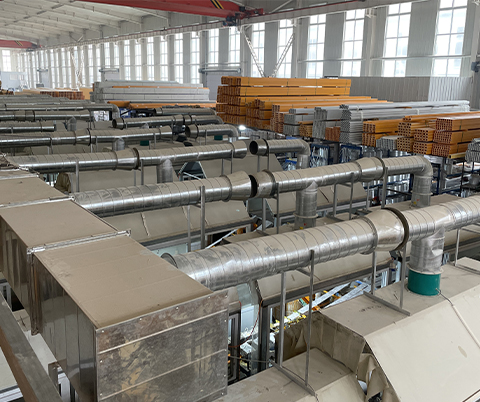loading...
- No. 9, Xingyuan South Street, Dongwaihuan Road, Zaoqiang County, Hengshui, Hebei, China
- admin@zjcomposites.com
- +86 15097380338
- Welcome to visit our website!
GFRP Bars Pricing Trends and Market Analysis for Construction Applications
Understanding GFRP Bars and Their Pricing
Glass Fiber Reinforced Polymer (GFRP) bars are becoming increasingly popular in the construction industry due to their unique properties and advantages over traditional materials like steel. As infrastructure projects demand more durable and sustainable materials, GFRP bars are emerging as a go-to solution. This article aims to explore the features of GFRP bars, their advantages, and the factors influencing their price.
What are GFRP Bars?
GFRP bars are composite materials made from a combination of glass fibers and a polymer matrix, commonly epoxy resin. The glass fibers provide tensile strength, while the polymer offers corrosion resistance and lightweight characteristics. Unlike conventional steel reinforcement bars (rebar), GFRP bars do not corrode when exposed to moisture, chemicals, and extreme environments. This makes them particularly advantageous for structures in harsh conditions such as marine environments, chemical plants, and areas with high humidity.
Advantages of GFRP Bars
1. Corrosion Resistance One of the most significant advantages of GFRP bars is their resistance to corrosion. This characteristic extends the lifespan of structures and reduces maintenance costs significantly, which can be crucial in large and expensive infrastructure projects.
2. Lightweight GFRP bars are much lighter than their steel counterparts, making them easier to transport and handle during construction. This can translate to lower labor costs and faster project completion times.
3. High Strength-to-Weight Ratio GFRP bars possess a high tensile strength relative to their weight, making them effective in providing structural integrity without adding excessive dead load to the construction.
4. Thermal Insulation Unlike steel, GFRP does not conduct heat; therefore, it is beneficial for structures where thermal insulation is a priority.
5. Non-Magnetic Properties GFRP bars are non-magnetic, making them suitable for applications where electromagnetic interference must be minimized, such as in data centers or medical facilities.
gfrp bars price

Factors Influencing GFRP Bars Pricing
1. Raw Material Costs The price of GFRP bars is heavily influenced by the costs of raw materials used in manufacturing. Glass fibers and epoxy resins can fluctuate in price based on market demand and supply conditions.
2. Manufacturing Processes The complexity of the manufacturing process also impacts pricing. Advanced production technologies, including pultrusion and filament winding, can increase costs but may also enhance product performance.
3. Market Demand The growing acceptance and demand for innovative and corrosion-resistant materials in the construction industry can drive up prices. As more contractors and engineers seek sustainable solutions for projects, the demand for GFRP bars is likely to increase.
4. Type and Specifications GFRP bars come in various sizes and specifications, which can also affect pricing. Custom sizes or specialized products designed for specific applications may carry a premium price due to the tailor-made manufacturing process.
5. Geographic Location The cost of transportation and distribution can vary significantly depending on geographic location. Areas with strong construction markets may experience higher demand and therefore higher prices.
Conclusion
GFRP bars represent a compelling alternative to traditional steel reinforcement in modern construction projects. Their unique properties, such as corrosion resistance and lightweight characteristics, make them ideal for a wide range of applications. When considering GFRP bars, understanding the pricing factors—ranging from raw material costs to manufacturing processes—can help construction professionals make informed decisions. As the market for sustainable and durable building materials continues to grow, GFRP bars are positioned to play a significant role in the evolution of construction practices.
In summary, while the initial investment in GFRP bars may be higher than traditional rebar, the long-term benefits and cost savings they offer can often justify the expense, leading to a more resilient and sustainable infrastructure.
-
The Rise of FRP Profiles: Strong, Lightweight, and Built to LastNewsJul.14,2025
-
SMC Panel Tanks: A Modern Water Storage Solution for All EnvironmentsNewsJul.14,2025
-
GRP Grating: A Modern Solution for Safe and Durable Access SystemsNewsJul.14,2025
-
Galvanized Steel Water Tanks: Durable, Reliable, and Ready for UseNewsJul.14,2025
-
FRP Mini Mesh Grating: The Safer, Smarter Flooring SolutionNewsJul.14,2025
-
Exploring FRP Vessels: Durable Solutions for Modern Fluid HandlingNewsJul.14,2025
-
GRP Structures: The Future of Lightweight, High-Performance EngineeringNewsJun.20,2025
